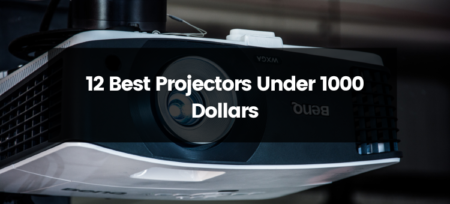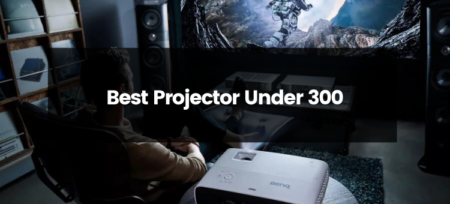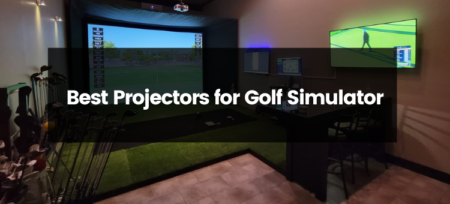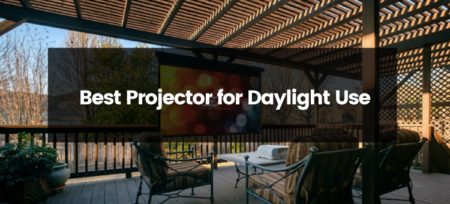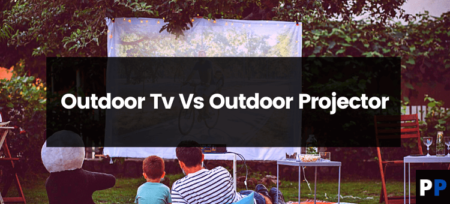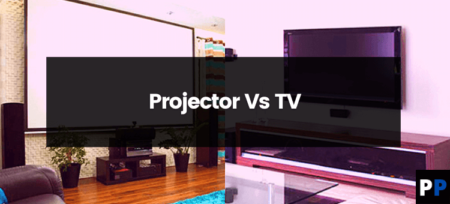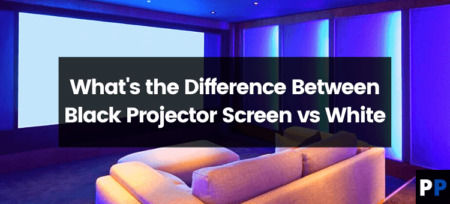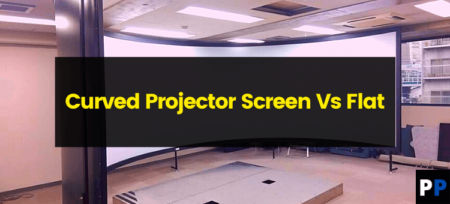Long-throw or short throw, choosing an appropriate projection system for the home theatre setup could be one of the most challenging choices you’ll have to make. The choice between the brightness, zoom range, contrast ratio, resolution, and other specs can make selecting a projector difficult.
Main Difference Between Short Throw and Long Throw Projectors
The main difference between Short Throw and Long Throw Projectors lies in how far away from the screen you want to place them. Projectors with long throws are intended to sit further away from the projection surface, whereas shorter throw projectors are intended to be placed closer.
Since they are designed to be closer to screens, they can project equipped with a chip that alters the shape of the image projected, so the angled projection appears like a regular rectangle on the projector’s surface.
This additional processing causes the short-throw projection systems to create more heat than their long-throw counterparts.
Long-throw projectors perform at their best when they are on the screens they’re projecting. This is a benefit in the case of a vast theatre in your home, or the power source is far from the location you wish the projection surface to be.
Long Throw Projectors
Images created by long-throw projectors are always relatively smaller than the distance between the projector and the screen. It is because they have a throw ratio greater than one. It has many advantages compared to projectors with short throws; however, there are several negatives too.
Pros
- As the name suggests, long-throw projectors can project images across more considerable distances, making them a good option for a screen that isn’t located where the power source is.
- If you’re projecting the outdoors using a long-throw projection device, it will provide less distortion if placed upon an unlevel surface. It is the same when projecting on an uneven surface.
Cons
- The most irritating thing about projectors generally and those with long throws, in particular, are shadows cast by people (and maybe wildlife) in the way of the screen. Because long throw projectors were designed to project over long distances, they are more vulnerable to obstruction by obstacles.
- As a backlight, projectors with long throws take up a significant part of the available space in the home theater.
- Due to the tilt of the projector, that can be corrected by additional adjustments to the keystone (our guidelines) by the way they are susceptible to more excellent reflections.
Short Throw Projectors
The throw ratio of a short-throw projector ranges from 0.4 to 1. It means that, for each foot from the surface that the projector has placed back, the image’s projected size will increase by between 1 and 2.5 feet.
Pros
- To begin, a shorter throw projector can save space. For projectors with a short throw with a throw-to-length ratio of 0.4 or less, a 4-foot wide screen is projected at one-seventh of” from the projector’s surface. This means there are no shadows when people who are watching stand up to use the bathroom.
- Since they can project from tiny distances, shorter throw projectors are ideal for projecting from behind screens, reducing the risk that the projector is hit by a pedestrian walking by.
Cons
- Due to the additional processing power needed to transform rectangle images to trapezoids capable of projecting a rectangle on an angle, short throw projectors may become hot. If this happens, the internal fans are activated to cool down the unit creating undesirable noise.
- In addition, since the projector causes the image to be projected at a specific angle, projecting onto uneven surfaces will result in more image distortion than you would get from a long throw projector.
Which Is Better for You?
The decision of which projector you need depends on various variables. Three crucial considerations are your home theater space, the location of the projector, and the projected screen size.
Space characteristics such as the power source and curvature of the room can affect which type of projector, such as a business or home theater projector, something we’ve previously discussed, is appropriate for your home theater system.
If you plan to install the projector on a wall or set it on the ground will also affect the decision. Long-throw and short-throw projectors perform differently on different sizes of screens.
Selecting the best projector is about balancing your needs as it comes down to your taste. There’s no one perfect method to set up your home theater.
Like most home theater devices, the best one for you depends on various factors. The space, portability, and screen size affect the type of projector best for you. The final decision is based on your requirements and preferences, and no one setup can be considered better than all others.
Factors
Here are some factors which you need to consider when you’re doing a comparison of both short throw and long throw projectors.
Space
The most important thing to consider when setting up something in a theater at home is the area it is being placed in. The curvatures of the room can guide the placement of your projection screen and the exact location of the projector. The power source will also determine the type of projector to choose.
First, you must ensure that your projection surface doesn’t catch the glare of outside light. It is best to place your seating across from the projector surface and for your speakers to surround symmetrically.
Screen Size
The size of the screen will be determined by the height of your ceiling and the viewing area. Free of vertical space, you’ll want the height of your screen to be one-sixth of the distance from the highest point of your viewing space. But this height is likely to be restricted by the ceiling in your room.
The screen should be placed at least three feet off the floor to provide an enjoyable viewing experience. Just subtract three feet from your room’s ceiling height, and you’ll get the most significant size your screen could be. Select the lower of these two numbers for your maximum height.
Placement
Another factor to consider is the location where you’ll put the projector. Another thing to consider is whether you would like your projector fixed to the ceiling or wall and resting on a table or on the ground.
Another option to think about when you have space behind the projection screen could be purchasing transparent screens and placing the projector in front of it.
